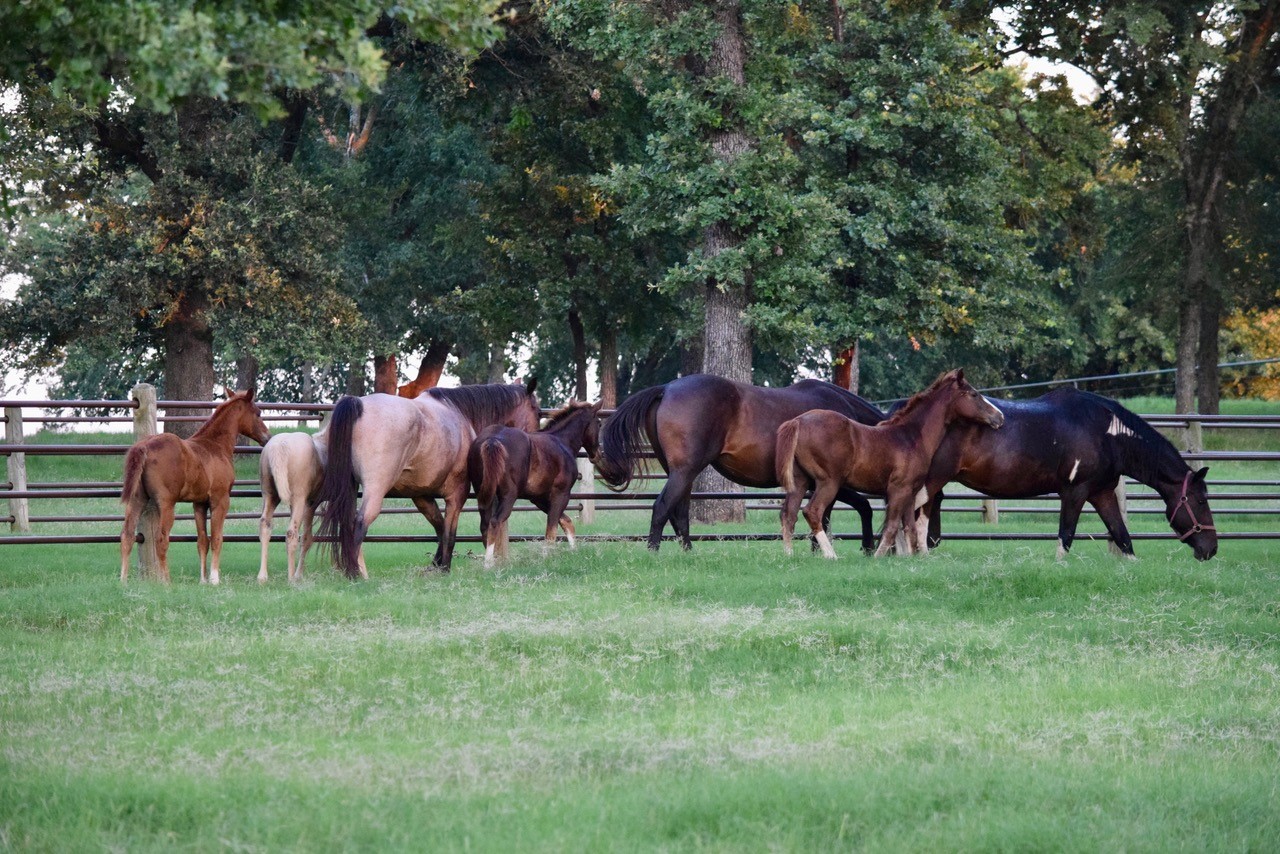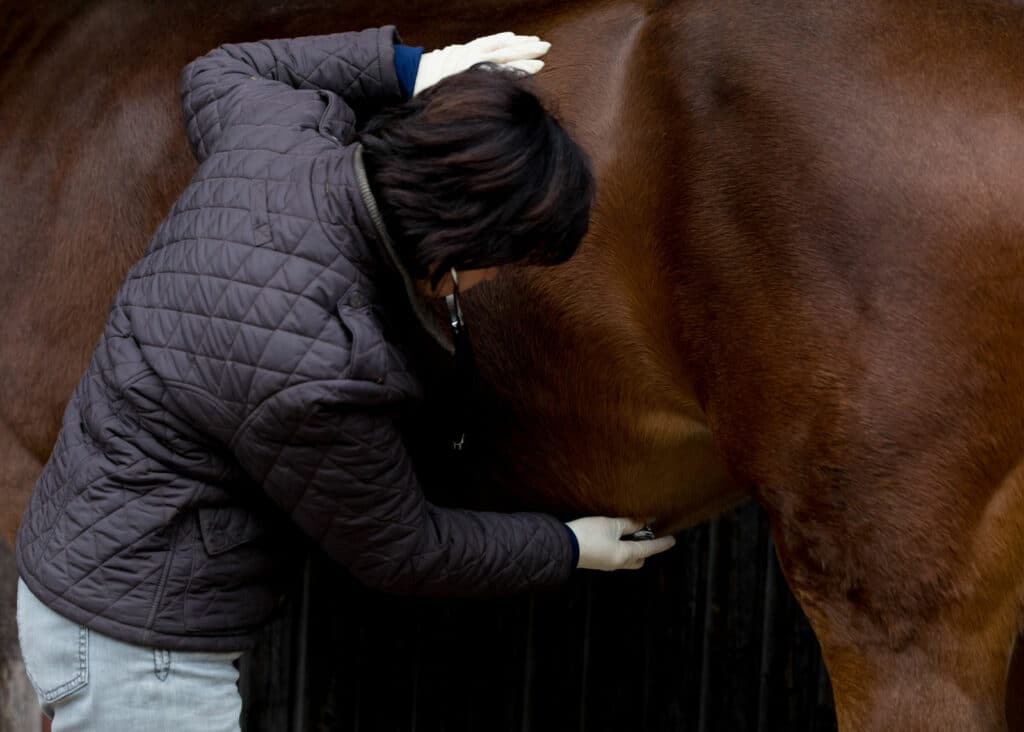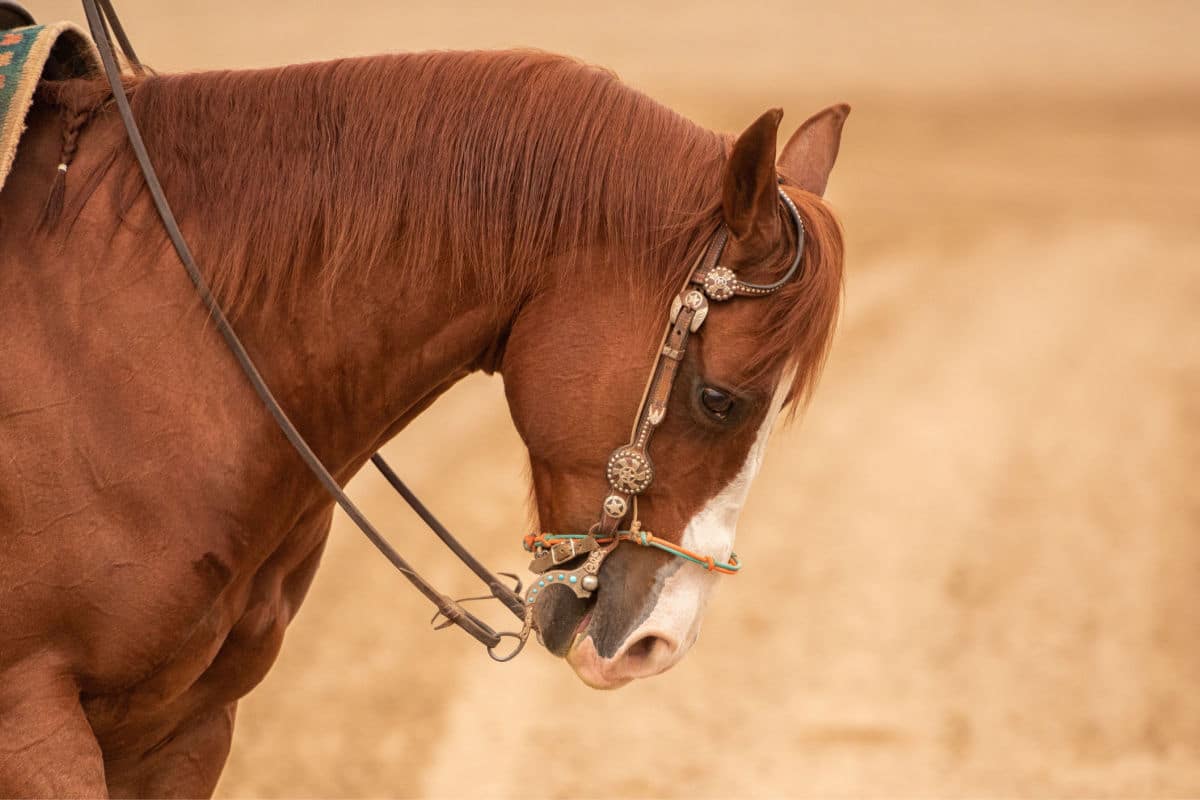When the weather turns colder, horses must adapt to changes in feed and lifestyle, which can have a negative impact on digestive health. Reduced water intake, increased grain rations, lower quality forage, and less movement may all contribute to a very dangerous type of induced colic, called impaction colic.
Impaction colic is an accumulation of feed or other dried indigestible material that obstructs the horse’s colon. Obstruction typically occurs at the narrowest points in the large colon, such as the pelvic flexure and left ventral colon.
Horses usually begin showing signs of impaction colic by decreased appetite, decreased manure production, and/or dry/harder manure. After those vague symptoms, an untreated horse with impaction colic may show the classic signs: pawing, staring at his flanks, or rolling. If you notice this behavior, call your vet immediately.
Four Causes of Impaction Colic with Increased Risk in Winter
It’s a fact that impaction colic isn’t directly caused by extreme cold or snow, but it’s more common during colder months because it’s harder to maintain husbandry that emulates a natural lifestyle.
Let’s analyze four factors that increase a horse’s risk for developing impaction colic and that are partially avoidable through proper care and attention.
Impaction Colic Risk Factor #1: Dehydration
When it’s cold, horses are disinclined to drink — and frozen buckets don’t help. Also, they’re not foraging on fresh grass, which is 75 percent or more water, compared to hay, which contains less than 20 percent water. To compensate, horses may need more water to maintain a correct and natural digestion.
Dehydration increases the chances of impaction colic and other problems. Your vet can help you assess whether or not your horse is properly hydrated. Two simple methods can also help you evaluate quickly:
- Mucous membranes – the tissue around the eyes, nostrils, and gums – should be pink and moist. Pale, dry, and tacky indicate dehydration.
- Skin elasticity or “tenting” – pinch the skin on the horse’s neck and see how long it takes to flatten back into place after letting go. If it takes longer than one second to resume its normal appearance, the horse is likely dehydrated.
To prevent dehydration, be sure you horse has access to fresh (not frozen) water 24/7.
Impaction Colic Risk Factor #2: Overfeeding to Compensate for Cold
Colder weather also prompts one of the most common causes of impaction colic: increasing a horse’s grain to meet the increased energy demands of keeping warm.
However, the need to feed for additional energy in winter is often just a myth. In fact, only high-level performance horses that compete may need that. Most non-professional horses slow down during the winter and the less demanding physical activity may already compensate for the “warming energy demand.”
Moreover, as we’ve written previously, grain and other hard feeds are not what help a horse stay warm. The structural carbohydrates in hay and high-fiber forage do.
Horses were designed to digest high-fiber feeds, like hay, chaff and beet pulp. The sugary simple carbohydrates in grain often upset digestion and create a host of other problems.
Impaction Colic Risk Factor #3: Feeding Lower-Quality Hay
Increasing hay intake in winter is a safer, healthier method for increasing calories in winter. To combat costs and issues with availability, many feed slightly lower-quality hay in winter.
However, several studies identify low-quality, stemmy hay as a common culprit of impaction colic. These studies conclude that “poor-quality forages consisting of high concentrations of hemicellulose, cellulose, and lignin increase the risk of impaction-related colic.”*
If a horse is struggling to maintain weight during colder months, increase good-quality, desirable hay. A bigger (without excess) intake will provide an adequate amount of energy for work and warmth. Also, it will encourage the horse to drink more, helping to avoid dehydration. Remember that you can soak hay — even in the winter.
Impaction Colic Risk Factor #4: Inactivity
Many horses are exercised less in winter; cold and bad weather discourage many riders. Additionally, turnout time, space, and movement are all typically more restricted.
In the wild (especially in the warm summertime months), horses graze constantly. This grazing is always accompanied by a moderate amount of physical activity. A 2001 study by J.M. Hudson noted “a threefold increase in the risk of colic for horses with no pasture turnout or that had a recent reduction in paddock size or time at pasture” — such as, during the wintertime, when your horse’s activity is restricted to a 12×12-foot box stall
We already know that small, fiber-rich meals ingested at regular intervals (e.g. grazing) are good for a horse’s digestive system, but physical activity is also an important part of the process. Inactivity slows the movement of food along the digestive tract, which can lead to the buildup of undigested material.
What Can You Do to Reduce Winter Colic Risk?
Do:
- Provide constant access to water. Give your horse clean water (and keep it from freezing), and provide electrolytes and a mineral block to help encourage him to drink. Be sure to monitor your horse’s hydration level to ensure he is drinking enough; don’t just count empty buckets.
- Maintain an exercise routine as much as you can.
- If your paddocks are in decent shape, turn out the horse when possible and provide accessible water. If not, seek an alternative, like a few hours in an indoor or outdoor ring, where the footing will likely be better. The extra movement will help kick-start his digestive system (not to mention reduce boredom).
Don’t:
- Don’t feed too much grain, but feed more of a good quality hay if you need an increase in calories, as hay produces a constant, long-lasting source of heat, helps promote good digestive health, and is generally accompanied by a good intake of water.
- Don’t make sudden changes in diet — slowly adjust turnout and feed between fall and winter.
- Don’t forget to follow and maintain your parasite prevention program. Parasites are often involved with colic and dehydration.
Better Care to Avoid Colic
Winter can be a tough time to keep a horse happy and in good health. Horse owners tend to get nervous in anticipation of winter colic, but taking good care of your horse and his increased needs during the winter months gives you a leg up on this seasonal issue — and maybe a chance to avoid it completely. Subscribe to the SUCCEED blog for more information about common wintertime digestive-health issues.
Have you ever owned a horse that colicked? Share your story with others to help spread the word about your experience, signs to look out for, and others who have experienced something similar.
* (Cohen and Peloso; 1996; White and Dabareiner; 1997; Hudson et al., 2001; Little and Blikslager; 2002)



